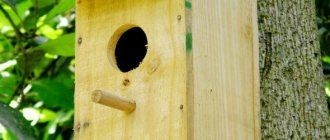The word "bonsai" in Japanese means "grown in a tray." This is the art of growing an exact replica of a real tree in miniature. The history of creating bonsai with your own hands goes back 2 thousand years. Initially, miniature trees of bizarre shapes began to be grown in China, but a century later the inhabitants of Japan adopted the technology.
Representatives of the Land of the Rising Sun made bonsai part of their traditional culture, introducing many innovations into the growing process. The Japanese introduced such a concept as admiring bonsai. With the spread of oriental culture throughout the world, interest in these miniature plants has grown.
There is a developed method for growing a dwarf tree, and you can also make an artificial analogue that will look impressive in the interior, and its creation will not require years of life.
How to grow bonsai
Growing a bonsai tree with your own hands is a long and labor-intensive process. This is not a cactus that you can forget for a month and nothing will happen. Many varieties of trees are suitable for growing: coniferous (pine, larch), deciduous (elm, poplar), fruit (plum, apple tree), shrubs (ficus, acacia, juniper). Coniferous plants symbolize wisdom, and deciduous plants symbolize beauty and youth.
You can grow from seed or buy a ready-made seedling. Planting is done in a small pot in well-fertilized soil. Fertilizers must be added to the water every week when watering. In florist shops you can find special mixtures that are designed taking into account the needs of these particular plant varieties.
At the initial stage, it is necessary to fix the trunk using strong wire to give the plant the desired shape. In the homeland of this art, it is not customary for bonsai to be straight and tall. Every season it is necessary to change the fixing materials so as not to damage the growing trunk with ugly scars. When the base becomes thick and strong enough, the frame can be removed.
Growing bonsai with your own hands requires attention and perseverance. It is necessary to prune as they grow, at least once a year, preferably in early spring. This process is carried out so that the tree does not grow and takes the desired shape. Thick and long branches are trimmed.
From time to time, bonsai need to be replanted in new soil. In this case, the lateral roots are trimmed. This must be done very carefully so as not to injure the plant.
Many-faced topiary
The art of topiary is no less ancient, its origins go back centuries, when people came up with the idea of “playing” with nature, giving shrubs and trees in gardens a variety of shapes. Modern topiary is a stylish solution for budget but exclusive interior design. Skilled craftswomen are constantly looking for new ideas for creating decorative trees. A large flowering garden made with your own hands is a wonderful gift not only for yourself, but also for loved ones, friends, and colleagues. Cute gifts are very symbolic. Using this or that decor, you can create amazing things with your own hands.
Bright floral topiary - will be an excellent gift
Fragrant big baobab
Coffee trees are a separate “fragrant” caste in the art of topiary. There are several variations on this theme, but we offer a lesson on how to easily make a large tree with your own hands. To work, you will need several small foam spheres, a package of coffee beans, thick linen yarn, a pot stand, glue, and scissors.
If you don’t have a ready-made base at hand, you can make it yourself using the papier-mâché method. Work algorithm:
- Let's prepare 7 small base balls, generously coat each of them with glue. We begin to attach the grains with the flat side down. We move arbitrarily, in a circle, horizontally, vertically. The main thing is that there are no gaps between the elements. When the first layer has dried, repeat the process, but with the flat side of the grains facing up.
- Making a trunk for a spreading baobab. Let's take a strong, thick wire, and tape branches of thin wire to it with tape. We bend it beautifully, giving the plant a bizarre shape.
- We carefully wrap the branches and trunk with twine on top, making sure that each turn lies tightly to each other. To ensure that the rope holds firmly and does not slide down the smooth trunk, we coat the wire with glue.
- We string coffee balls onto the branches, greasing the holes with superglue.
- In a pot, mix gypsum with water to the consistency of thick sour cream, insert wood, and let the mixture “set.”
Important:
For topiary, you need to choose a base ball of light weight so that the thin trunk holds the entire structure. A plastic hollow ball or Christmas tree toy is ideal.
DIY fragrant baobab
When the plaster has completely dried, we decorate the stand. You can put coins, decorate with moss or use floral sisal. For a thick and rich aroma, decorate the tree with cinnamon sticks and spicy star anise stars. The coffee tree is not only beautiful, but also symbolic: seven wonders of the world, seven days a week, seven colors of the rainbow - all this is not by chance! An original gift will definitely bring good luck, family and financial well-being to your home.
Artificial or real
Growing a real tree is a long process that will last for decades. Not everyone has the patience to create such a masterpiece. It is not surprising that bonsai is rarely sold in flower shops and is quite expensive.
Artificial trees are a great alternative. You can decorate your home with a beautiful tree and not drag out this process for years. Creating them is a creative and exciting activity. Despite its apparent complexity, anyone can cope with it with a little perseverance and work. A few evenings, and an exclusive home decoration - a DIY artificial bonsai - is ready. It can be made from various materials: beads, coins, ribbons, kanzashi, artificial and natural greenery, dried leaves and much more. Below are several options on how to make your own bonsai.
Bonsai from other types of ficus: Bengal, Fig, Panda, Rubber, etc.
You can create an original and spectacular bonsai from other types of ficus, but you need to take into account some nuances:
- Bengal ficus. It is also called banyan because of its specific shape: one plant looks like a whole grove. This is why the Bengal ficus is valuable among bonsai lovers. You can also form a grove from other species, but it is easier to get a bonsai from the Bengal ficus, and it will look more impressive. Leaves with a variegated pattern will add decorativeness to the composition.
- Ficus Panda has very dense leaf plates, giving the bonsai a special originality. The tree tolerates dry air very calmly, so it will take root well in a city apartment.
- Fig ficus, or Carica (wineberry, fig tree). This species has thick branches, so pruning the plant is difficult. The leaves are large, but decrease in size over time - this is a plus for bonsai. The downside is that the fig ficus sheds its leaves in the winter. But in the summer it quickly gains new strength, especially if it is taken out into the open air.
- Ficus rubber plant. Not all representatives of this species are suitable for creating bonsai. Experts prefer to use specially bred hybrids with different color patterns on the leaves. The leaves of the rubber ficus grow quickly and are arranged in a spiral, which is good for the formation of a bonsai tree. The plant is demanding of lighting and does not tolerate changing it, so you should keep the rubber ficus bonsai in the same place. Do not forget that the juice of this species is poisonous: do the pruning with gloves and sprinkle the cut areas with activated carbon.
- The rusty-red ficus is distinguished by smooth reddish bark and leaves covered on the inside with red hair. This species grows very slowly, but you do not have to do frequent pruning. The stems of the Rusty Red Ficus, like the Ficus Bengali, form a banyan tree, but not very pronounced. The plant is very hardy, mistakes in care are not critical.
Base
A small tree can be “planted” in a small decorative pot or a flat vessel of an original shape. The diluted gypsum mixture is poured into the container and the plant is placed in it.
You can do without dishes at all. Cover a container of a suitable shape with cellophane and do all the manipulations with the plaster and the tree. After drying, remove the workpiece and paint it as you wish.
Place pebbles, decorative moss, sisal and other elements at the “roots” and on the “ground” to give the composition a natural look.
Something about sakura: interesting facts
This plant is so popular among the Japanese that you can collect many interesting facts about it:
- - the 100 yen coin features a sakura design;
- - the image of Japanese sakura is also found on military headdresses, as an indicator of rank;
- - now sakura can be seen on the emblems of the Japanese police and armed forces;
- — today in Japan there are up to 300 types of sakura, but only 10 of them are considered natural;
- — cherry blossoms are very beautiful at night (it is illuminated by many “right-appu” and “washi” lanterns);
- - sakura with pale pink flowers is called “shidarezakura”, with white flowers - “someishino”;
- — the oldest sakura grows on the territory of a Buddhist temple in the city of Hokuto. It is estimated that it could be up to 2000 years old. Today this tree is recognized as a national natural monument. The trunk circumference reaches 13.5 meters;
- — During the Hanami celebration, the Japanese drink sake. According to ancient belief, flower pollen dropped into a glass of drink should bring strength and health;
- - one of the signs of the peasants is that abundant flowering is a sign of a good rice harvest;
- — Sakura is one of the most common names among Japanese girls;
- - sakura can often be seen as a pattern on a kimono;
- — poets, writers, artists, animators and filmmakers quite often use the image of sakura;
- - During World War II, cherry blossoms were depicted on kamikaze planes. As previously thought, this should have inspired the pilots.
Twigs and crown
To work, you will need thin copper wire and about 100 g of green beads. To make the tree look more alive, it is recommended to take several shades of the same color and mix them in one container.
Measure 45 cm of wire. String 5-8 beads and fix them into a ring, moving 10 cm from the edge. String the required number of beads again and make a ring at a distance of 0.5 cm from the first one. In this way, make several “leaves” so that a 10cm end remains.
The resulting wire with loops must be twisted, starting from the first leaf, clockwise. This will create a small twig. Spread the leaves beautifully. You need to make at least 50 of these branches to make a fluffy and beautiful tree. The number of branches depends on the desired size of the bonsai and the wishes of the master.
Now you need to form thicker branches by twisting 5-6 branches together. Each subsequent one is attached slightly lower than the previous one. It turns out 9 pieces. They are also twisted together - first in 3 pieces, and then combined into one.
Straighten thoroughly. The crown is ready.
Trimming
You need to trim the succulent with a sharp knife or scissors. Before each circumcision, the working surface of the instrument should be sterilized with alcohol . This will protect the fat plant from diseases, especially if several plants are processed.
Formation of a thick trunk
To obtain a powerful trunk, you need to grow tops on the plant. First, you should grow long branches. When they reach the desired thickness, their excess length should be cut off .
The cut site will heal over time. A thick top with new shoots forms on it. During the growth of the top, the branch is not cut, but the main shoots are cut off every year.
Advice!
If the branches have grown long, they should be cut off. Regular pruning of branches gives more energy to the trunk, as a result it begins to thicken.
It is necessary to remove too large leaves from the fat plant, as well as those that grow at the bottom of the crown. This technique will facilitate access of light deep into the trunk.
How to form a crown yourself?
When creating a crown, you need to take into account the intended shape of the future tree. It is important to identify the stems that need to be developed into a bonsai branch. You can decorate the crown when 3–4 pairs of leaves appear on the branches.
This video shows how to grow a thick stem in a fat plant and form a crown
Making a barrel
Now you need to make the trunk. In order for the tree to stand firmly, you need to install a thick, strong wire in the center and secure it with thin wire or floral tape. Using thin paper, a bandage or floral tape, wrap the future trunk, giving it the desired size and shape.
The next stage is fixing the tree. In a container you need to dilute the gypsum to the consistency of sour cream and place it in the container in which the bonsai will “grow”. Install the tree and let the composition harden. You can coat the trunk and branches with plaster and use a toothpick to create an imitation of bark.
The final step is painting the trunk and base. Acrylic paints are suitable for this. Select the desired color (usually brown) and paint the surface. Once dry, the process can be repeated as needed. The final touch is to coat the barrel with PVA glue or varnish. After complete drying, the tree is ready.
Here's how to make an artificial beaded bonsai. By varying the number of beads in a leaf or the options for twisting branches, you can make interesting compositions that will be different from each other. You can add large beads that will imitate fruits, coins with holes drilled in them, or buds made of beads. You can use ornamental pebbles or wooden beads as a basis. In each case, the original tree will be obtained.
By the way, the barrel can also be made from scrap materials: driftwood, cardboard, plastic.
Volumetric tree on the wall
This unique 3D decoration can be made with your own hands on the wall (and even on part of the ceiling) without any problems. To create a real masterpiece, it is not necessary to have the knowledge of a sculptor or artist.
Important: This decor requires a lot of space.
You will need:
- Master OK;
- Bucket;
- Marker and scissors;
- Acrylic paints and brushes;
- Scotch;
- A bag of dry plaster;
- A large sheet of cellophane film.
Progress:
- Let's draw a contour mirror image on the cellophane film with a marker, and when we cut out the drawn middle, we should get a stencil;
- We stick it on the wall with tape;
- Pour water into a bucket and spread the plaster;
- Using a trowel, carefully fill the empty stencil space;
- Remove the film after the mixture has dried;
- We apply several more layers of gypsum, making the last one round;
- When the solution has dried thoroughly, paint the sculpture with acrylic-based paints.
You can choose a wide variety of palettes. A “natural” image would look great in the living room, or a fabulous tree, unusually painted, on the wall in a children’s room.
Artificial bonsai made from real pine
Natural pine branches can become the basis for an artificial tree. Below are instructions for creating a bonsai with your own hands step by step. In order for the composition to last for a long time, it is necessary to preserve the needles. Take one part each of denatured alcohol and acetone, add 2 parts glycerin, mix. Pour the pine branches with this mixture so that they are completely covered and leave for a week. After that, air dry them. If the colors have faded, you can tint them with acrylic dyes.
The trunk and branches are made of strong wire, wrapped in fabric, covered with plaster and painted. As in the previous master class.
Bunches of pine needles are glued onto the finished trunk with a hot gun.
This almost real tree will fit into any interior.
Satin ribbons
This tree will be a wonderful decoration for a wedding celebration. It's very easy to make. It is enough to show a little patience and imagination. The only difficulty that can arise is making flowers from satin ribbons.
So, to create a topiary you will need:
- About seven meters of satin ribbons.
- Threads, beads, yarn, lace for decoration.
- Glue.
- Wooden stick or plastic pipe.
- Flower pot.
- Crumpled newspaper or papier-mâché.
- Earth, decorative stones, shells.
Progress:
- According to the photo above, flowers are made from ribbons. On average, one topiary will require 15-19 roses.
- Now the crown is made. You can take ready-made papier-mâché, or you can crumple newspaper into a ball shape. The workpiece should be wrapped with yarn for greater density.
- The trunk is made from a branch or plastic pipe. Then it is wrapped with ribbon or decorated with lace.
- Next, using glue, the trunk is glued to the crown of the tree. The bottom of the trunk is placed in a pot and covered with earth and pebbles to make it heavier.
- Using threads, satin roses are sewn to the crown. In order for the flowers to hold more firmly, the workpiece is additionally fixed with glue.
- The pot is decorated with bows, lace and yarn. Flowers should be carefully straightened and, if necessary, decorated with decorative ribbons and rhinestones.
Artificial tree care
A real bonsai requires careful care throughout the entire growth period. But artificial trees are not at all demanding. It is necessary to remove dust from them periodically. To do this, you can carefully walk over the branches with a broom or blow the composition with a stream of warm air from a hairdryer.
A bonsai tree made with love by your own hands is a good lasting gift for friends and family.
Once you make a miniature tree, you won’t want to stop. After all, to make bonsai with your own hands, different materials are used, giving scope for creativity.
Different types of trees
The procedure for creating a bonsai plant is the same for any type of tree. Only the types of weaving of leaves and buds differ.
The stages of work outlined above are suitable for the manufacture of all types of plants. It should be taken into account the fact that all trees are sooner or later covered with flowers. If you want to make a flowering tree, you must first select the species and carefully examine the picture so as not to make a mistake with the shape and color of the petals.
Having the general skill of decorating a bonsai tree, it will not be difficult to make soft pink sakura petals, ruby viburnum berries or delicate birch earrings.











